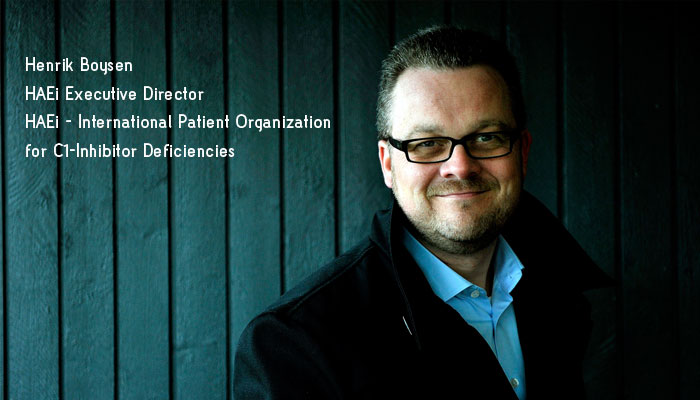There is tremendous opportunity to take the experience we have within the health sector in the UK, Middle East and Europe to the new and emerging markets across Asia. Our expansion plans are ambitious and we are looking to grow our teams across the region significantly over the next three years as well as working closely with our colleagues within ARCADIS to support our global clients who are also seeking opportunities across the sector and region.

1. What are the main problems when it comes to PPP in Asia?

Significant use of PFI and PPP for health has been undertaken in the UK, Europe, Australia and Canada. The Middle East is also starting to look and use this concept. However, whilst the model has been used for major infrastructure projects in Asia such as roads and water projects, it is a relatively new approach for providing new healthcare facilities.
There are many reasons why a country may look at PPP as a solution to improve access to quality health services. These reasons extend beyond just the simple delivery and management of a building. In fact, there are a number of examples from projects that are coming to market now that include the delivery of clinical services as well as a fully staffed solution. Such an approach is being considered as a way of providing a faster solution for sustainable resourcing and management. Whilst this is possible, it does introduce a number of politically-sensitive challenges that may require careful consideration. For example, it’s important to consider how palatable this approach may be to the local population. In addition, it’s important to look at whether this model provides an attractive project to a market where the level of expected spend on health is far lower than is required to run a high quality, modern health facility.
This is where international expertise can assist. Beyond delivering the building and operational contract, international expertise can look to support the development of the project, explain the position that contractors, operators and funders are looking for, and advise on the principles that may have to be considered to get international organisations interested in bidding and looking to invest significant time and money in these projects.
2. What are the specific issues in countries such as Malaysia, Indonesia, India, Philippines, etc. when PPP is implemented?
One of the problems that always occurs in countries where the PPP process has not been used previously is in developing a legal and regulatory framework that enables such a procurement process to happen. This is visible in all of the countries named above, where centres for the development of PPP cross sectors have been formed, and appropriate changes to the regulatory frameworks have been made. However, once this is done, support is still needed to get a project to market on a firm footing to ensure it provides sufficient excitement within the market to enable a full competition to be held.
This is where the lessons from other regions and sectors can support in driving best practice. Being able to explain, not just how to develop the tender documents, but also some of the issues faced by the contractors, funders and operators around key areas is vitally important. This includes explaining areas of concerns which may restrict organizations looking to bid such as risk transfer, a lack of clarity in terms of service specifications and length or cost of the bid process.
This approach enables a greater understanding as to whether PPP is the right model to be used and, if it is, how it should be used to get the outcome that the government requires. Our role as consultants is to look at the many approaches that have been taken in different countries and sectors, and use this knowledge to support our clients in adopting the approach that works best for them. As healthcare is delivered differently in different countries across Asia, it’s impossible to point to one country’s approach as being the correct one for PPP. This is where knowledge across the globe will support the delivery of the right approach.
3. What are your top tips for operators and investors carrying out PPP in these countries?
Firstly, select the right projects – PPP will work better on certain schemes and you have to look at what you wish to achieve and whether it will work for you and the local market conditions you are working within.
Secondly, assess best practice from other international PPPs – adapt these to the regions where the projects will occur.
Thirdly, identify project risks – set out a robust risk management programme to ensure you closely identify which risks you wish to pass to the private sector and which are actually best managed by yourself. This provides comfort to those who will look to respond to your project that you understand the process and have put together something that is realistic in terms of delivery and affordability.
Lastly, make sure you get the right advice – ensure you work with consultants that understand the PPP procurement structure across many different regions as well as your own market.
4. What are your top tips for operators and investors carrying out PPP in these countries? What kind of risks do operators and investors need to be aware of before rolling out projects? How do they manage these risks?
Managers, operators and investors of health PPP projects need to be aware of, and must consider, a number of risks before they even decide whether they will bid on a project. This includes:
- What is the risk associated with who the contracting party is and how strongly is this linked to a guarantee from the government that payment would continue, even if the facility weren’t used? This is particularly important in emerging countries that are looking toward rapid expansion of access to healthcare.
- How long is the contract? Is it sufficient to enable appropriate returns but not too long to mean that some assumptions on operational costs, risk profile and other key factors are impossible to accurately predict?
- What services are required? If it includes provision of managerial and clinical staff, are the terms relating to these appropriate to drive the quality and service requirements? Is there a cost relating to managing current staff? Where will the new staff come from? Is training required? How will such staff be attracted? What level of clinical risk is there if not all staff are provided? How will this be mitigated?
- Is the expected level of affordability within what can be realistically developed and operated to the required standards?
- How will the facilities be managed in terms of both hard and soft services? If not included within the contract, what level of risk transfer in terms of damage to the building is provided?
- Is the legal framework in place?
- How robust are the project teams?
5. How well has PPP helped to fill the financing gap in the healthcare industry in South East Asia? How do you predict this trend to evolve?
At this stage, projects are emerging and it is hard to say how it has helped to fill the funding gap but what is clear is that many countries are interested in using PPP as a means to facilitate healthcare infrastructure construction. The Philippines and India lead the way in considering this model. In addition, if you look at patterns with large infrastructure projects, such as water and roads, countries like Indonesia, Myanmar and Malaysia are likely to start considering the model as well.
6. Can you share some insights on the company’s growth and expansion plans in the healthcare sector in Asia?
As part of the ARCADIS group, EC Harris has already stated our strong desire for growth within the Asia Pacific region, with health being a core part of this ambitious expansion plan. We are already growing our healthcare team across our offices within Hong Kong, China and Singapore as we continue to respond to the significant growth in market need in these locations.
The services we provide reflect the diverse needs within the different countries we are focusing on. This includes a need for the re-development of hospitals in Hong Kong and addressing the growth in private healthcare and senior care in China, where a Joint Venture approach is being sought. The development of PPP is emerging in SE Asia, including in Singapore.
7. Can you tell us something about the future endeavors EC Harris is coming up with?
As previously mentioned, we see that there is tremendous opportunity to take the experience we have within the health sector in the UK, Middle East and Europe to the new and emerging markets across Asia. Our expansion plans are ambitious and we are looking to grow our teams across the region significantly over the next three years as well as working closely with our colleagues within ARCADIS to support our global clients who are also seeking opportunities across the sector and region.
In the long term, the PPP model in emerging countries is likely to play a large part of our growth and consequently, we are now looking at how we can work with other parties to assist those looking at this process by passing on some the lessons we have learnt. PPP need not be complex. What is key is confirming what the outputs are that you want to achieve and then putting together a robust process to achieve it. Although the market within the UK and Europe has slowed significantly at present, it must be appreciated that at some point, it will increase again. This means there will be competition for projects to attract the right organizations to respond, build and operate facilities and I therefore believe that work now will pay significant dividends in the future.
Whilst health is key to any country in maintaining appropriate standards of living, there are other areas such as education which are just as important. My view is that what we should be doing is to look at how the development of health facilities can also support the desire to drive a better social infrastructure and the delivery of sustainable communities. Linking the expansion of education has to be an area that could drive additional value from the buildings which are being planned at present, and is an area which I believe should be explored more moving forward.





